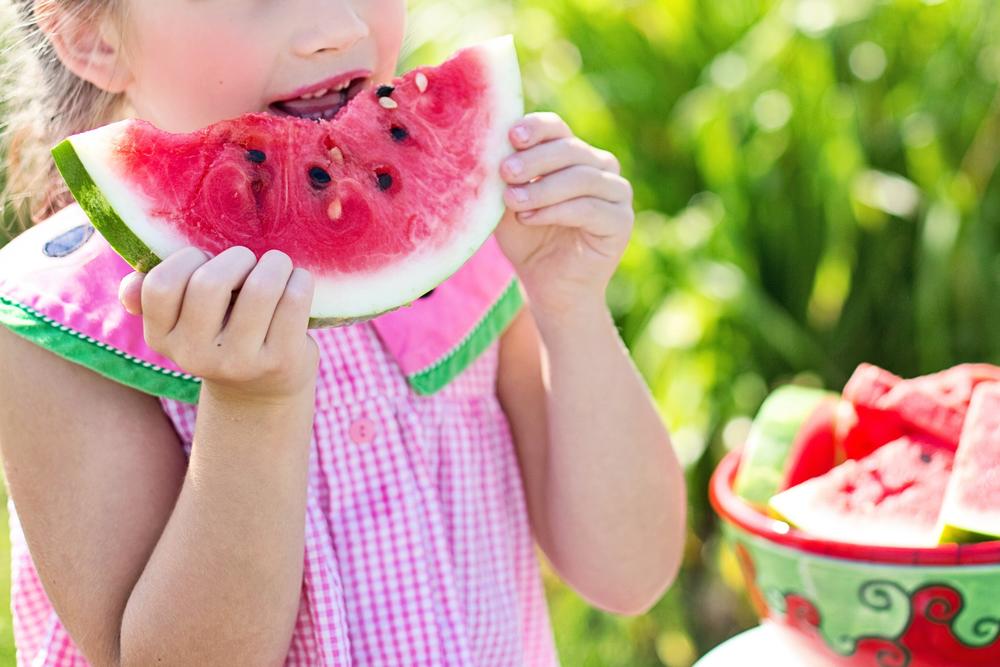
Section Branding
Header Content
Study: Kids who lose WIC see nutrition scores decline
Primary Content
LISTEN: GPB's Peter Biello speaks with Travis Smith, co-lead on a study of WIC and nutrition loss when children lose it.

The USDA's Special Supplemental Nutrition Program for Women, Infants and Children, commonly known as WIC, is meant to provide pregnant and postpartum women, infants and children under 5 years old with a solid base of healthy foods. But when children age out of the program, they may suddenly lose access to those foods. A new study conducted at the University of Georgia aims to quantify the nutritional loss these kids face. Associate professor of agricultural and applied economics Travis Smith co-led the study. He spoke with GPB's Peter Biello.
Peter Biello: So your study managed to put a number on how much nutritional value kids lost when they aged out of WIC. What was that number?
Travis Smith: That's right. We find that when kids age out of WIC and they have yet to enter kindergarten — and in kindergarten they are provided with school meals — that their diet quality declines by up to 20% on average.
Peter Biello: And how did you determine the loss was 20%?
Travis Smith: The way the WIC program works is that you have these benefits until you turn 5 years old and the month after you turn 5, you lose benefits. So we're effectively comparing kids' quality of the food that they're consuming. So this is reports of food that the kids are actually eating just before they age out of WIC and just after they age out of WIC. And then we additionally compare those that have seamlessly gone into school. So they're in kindergarten versus those that are not. And so that's where we're able to use those differences.
Effectively, what we're using is the randomness of when kids are born, right? So if your, if your child was what they call "a late school starter" — so this would be a kid that's born in the fall or winter in most states like the state of Georgia — they would miss the deadline to start kindergarten. So they would turn 5. They wouldn't be in kindergarten. It would be sometime in the fall or winter. They would lose access to WIC. They would not have access to school meal programs. And that's where we see the decline. And for these kids that seamlessly come out of WIC and go into school food programs, we see no effects at all.
Peter Biello: So you found that as of 2020, there were about 2 million children in the WIC program. About half a million were 4 years old. And most of those kids would lose WIC before going into kindergarten. Now, some lost it for 11 months. Some didn't lose it for very long. During that loss period, what kind of food choices were parents making for their kids?
Travis Smith: Yes, so we did look at where is this drop in dietary quality coming from. So just to back up, how this is measured: This comes from nutritionists. They have this index called the Healthy Eating Index. And what that does is that you can imagine if you were to tell me all the foods that you ate yesterday, I could score you on how closely aligned to the dietary guidelines for American citizens like the Food Guide Pyramid or the MyPlate. And so as you eat, as you get closer the recommendation for fruits, for example, you can max out the fruit score. And we do this for all the different components. It's 13 different components. And so we looked at the individual components to see where is this coming from. And we saw that it mainly came from the healthy components, right? So this would be parents switching from getting the whole grains through the WIC program to switching to buying refined grains with their own money after they've lost WIC. Another one that we saw would be the WIC program provides a $9 per month cash voucher to buy fresh produce. And so parents could switch from the fresh produce to say, like canned fruit with syrup in it. And so as you go down all these different items, the switching from the healthier items that are provided through WIC to the not-as-healthy but cheaper alternatives, that all adds up to a 20% decline.
Peter Biello: And you write in the study that it may not seem like 20% is a big deal, but for kids that age, it really is. Tell us why.
Travis Smith: There's this whole nutrition literature, a long literature from nutritionists that show what you know: Most listeners, if you've had small kids like I do, or if you've been around small kids, you know, it takes a lot of work to get kids to eat healthfully, right? Or to try a new food like broccoli. And so the WIC program is providing this opportunity for parents to have these healthy foods and have these repeated exposures for kids. And you can build up this kind of nutrition capital, so to speak. But we also know from the nutrition literature and again, anecdotally, most parents would know this, is that it's quite easy for kids to have a reversion, right? To say, "Oh, well, I don't need to have the broccoli, I'd rather have the French fries," right? And then that's really hard to overcome once you slip down that way. So for these kids that have been on WIC for years, building up this nutrition capital, and then all of a sudden just because their birthday happens to be in the fall or the winter and their parents are not able to afford those healthier versions of food that was provided through WIC, you can have this reversion that can happen quite quickly and it could take some time to get back up to that trend that they were on.
Peter Biello: One way, as you write, to keep kids on WIC longer or to keep them on WIC nutrition levels longer would be a policy fix, a so-called "kindergarten roll off," which was proposed in the House and Senate in 2021. How would that fix the problem?
Travis Smith: Yeah, So yeah, this was proposed in 2021. It's been proposed again since our study was published in just last May in 2023. And actually it's been proposed numerous times in Congress before. And I'll just note that it's bipartisan. There's Democrats and Republicans that support this bill. It's just never made it out of the committee. So we're talking about a very, very small amount to allow kids to stay on WIC until they enter kindergarten. That would allow this seamless transition and maintain diet quality, because that's what we find for the kids that are on WIC and transition into the school meal program seamlessly. There's no reduction in the quality of their diets.

